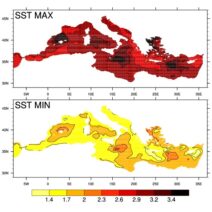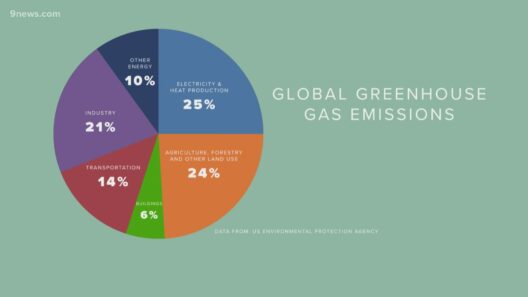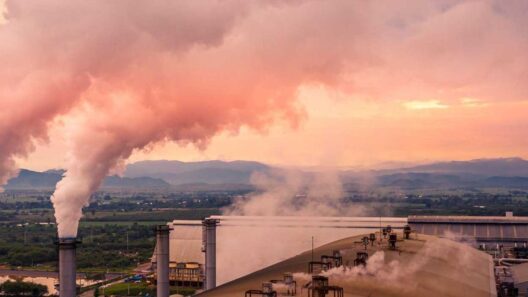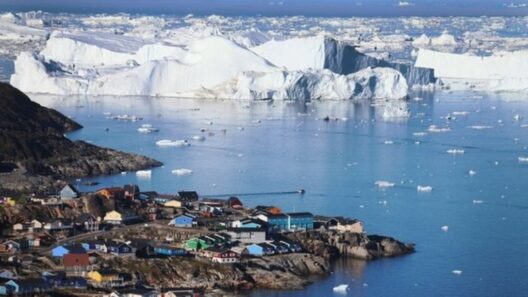The phenomenon known as the greenhouse effect is a cornerstone of our understanding of Earth’s climate system. It is imperative to delve into this significant process that governs the planet’s temperature and, consequently, its ability to sustain life. The greenhouse effect operates through a delicate interplay of solar radiation, atmospheric gases, and Earth’s surface characteristics. This intricate dance not only intrigues scientists and environmentalists alike but also poses numerous questions about the future of our climate and its myriad implications.
At its core, the greenhouse effect involves the absorption and re-emission of infrared radiation by certain gases in the atmosphere, commonly referred to as greenhouse gases (GHGs). These gases, including carbon dioxide (CO2), methane (CH4), and nitrous oxide (N2O), act much like the glass of a greenhouse, allowing sunlight to enter while trapping heat that would otherwise escape back into space. This process maintains the Earth’s surface temperature at a level conducive to life as we know it, but the balance is delicate, and the implications of disrupting this balance are profound.
The intricate mechanics of the greenhouse effect invite us to explore various phenomena, such as solar radiation, energy absorption, and heat retention.
The Role of Solar Radiation in the Greenhouse Effect
Every day, the sun bathes the Earth in an astounding amount of energy, sustaining all forms of life. Approximately 30% of this incoming solar radiation is reflected back into space by cloud cover, atmospheric particles, and Earth’s surface. The remaining 70% is absorbed by land, water bodies, and vegetation. This absorption warms the planet’s surface, setting off a chain reaction that leads to the greenhouse effect.
Once solar energy has penetrated the atmosphere and warmed the Earth, it is subsequently re-emitted in the form of infrared radiation. This energy does not escape the atmosphere as freely as it entered because of the unique properties of greenhouse gases. When infrared radiation attempts to leave the Earth’s surface, it encounters these gases, which effectively capture and reradiate a portion of this energy back towards the surface. This retention of heat is what keeps our planet habitable, creating those familiar, comfortable climates that have formed the backdrop for human civilization.
However, while the greenhouse effect is essential for sustaining life, an excess accumulation of greenhouse gases can lead to unnaturally high temperatures, thus triggering a cascade of environmental challenges. With industrialization and deforestation pushing GHG levels to unprecedented heights, understanding the mechanics behind this process is crucial for finding sustainable solutions.
The Symphony of Greenhouse Gases and Their Sources
Greenhouse gases are not all created equal, and their potency varies significantly. For instance, methane—produced through agricultural practices, waste decomposition, and fossil fuel extraction—is over 25 times more effective at trapping heat than carbon dioxide over a century. Nitrous oxide, associated with agriculture and certain industrial activities, is also a potent GHG, contributing to climate change in a more subtle yet equally alarming manner.
As we ponder the origins of these gases, it becomes increasingly clear that human activities have amplified their concentration in the atmosphere. Deforestation for timber and agricultural expansion disrupts the natural carbon cycle, reducing the number of trees available to absorb CO2. Simultaneously, fossil fuel combustion—whether for energy, transportation, or industry—introduces significant amounts of carbon into the atmosphere, further saturating it with this harmful gas.
This contribution from anthropogenic sources has rendered the greenhouse effect a double-edged sword. While it serves to maintain life on Earth, the added influx of greenhouse gases has led to global warming—a pressing concern for ecosystems, biodiversity, and human societies alike.
The Consequences of an Imbalanced Greenhouse Effect
An enhanced greenhouse effect, driven by increased GHG concentrations, results in numerous ecological consequences that are currently unfolding. Global temperatures have risen markedly, resulting in shifting weather patterns, increased frequency of extreme weather events, and alterations in precipitation cycles. These changes threaten agricultural productivity, water supply, and the overall stability of ecosystems.
One of the most alarming manifestations of climate change due to the enhanced greenhouse effect is the melting of polar ice caps and glaciers. This phenomenon not only contributes to rising sea levels, threatening coastal habitats, but also disrupts delicate ecosystems that rely on stable ice environments. The specter of rising oceans poses stark challenges for countless marine species and human populations dwelling in low-lying coastal regions.
Moreover, an augmented greenhouse effect can catalyze a cascade of feedback loops. For example, melting permafrost releases vast quantities of stored methane, further intensifying climate change and exacerbating the greenhouse effect in a vicious cycle. It is evident that without hegemonic control over our greenhouse gas emissions, the delicate balance of our atmosphere may tip into an irreversible state, with catastrophic consequences for future generations.
In conclusion, the greenhouse effect is a sophisticated interplay of solar energy, atmospheric gases, and Earth’s biosphere. While it remains a critical component that sustains life, the burgeoning concentration of greenhouse gases due to human activities has heightened the stakes. To navigate our intricate relationship with this natural phenomenon, we must engage in collaborative efforts to mitigate emissions, restore ecosystems, and promote sustainable practices. With conscious and collective action, we can usher in a future where the greenhouse effect continues to nurture life rather than threaten it.







